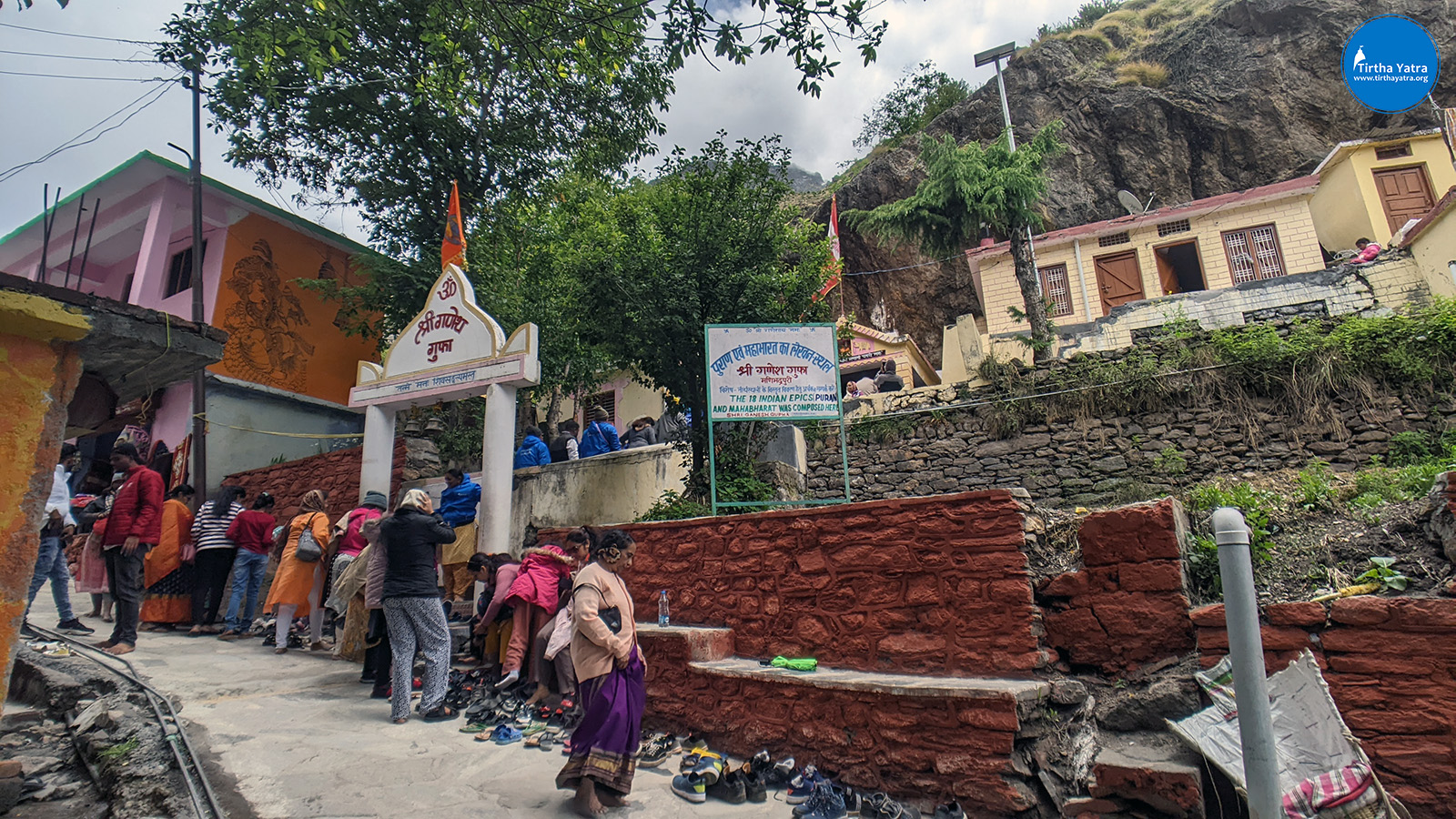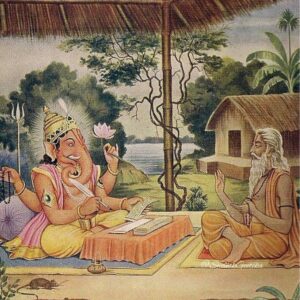
Ganesha Gufa in Badrinath is the sacred cave where Lord Ganesha wrote the Mahabharata on the dictation of Srila Vyasadeva. Located near the Vyasa Gufa in Mana Village on the banks of the sacred Saraswati River, the atmosphere around Ganesha Gufa is pristine and scenic. You would definitely love to have some free time for yourself or with your family at this heavenly sight.
The Keshav Prayag (Confluence of Alakananda and Saraswati River) begins from here. It is accessible via less than 100 steps before the Vyasa Gufa.
The role of Lord Ganesha in writing the Srimad Mahabharata is a historical event. And this sacred cave is witness to this historical event which took place 5000 years ago. The fact that it is available for devotees of the 21st century to visit and have darshan is very inspiring. Especially the devout readers of the Mahabharata.
Lila of Ganesha Gufa
The Ganesha Gufa and Vyasa Gufa share the same age i.e. around 5330 years old as of 2022. The Mahabharata, which contains the famous Gitopanishad or Bhagavad-gita was written by Lord Ganesha sitting inside this sacred cave.
Lord Ganesha is the celebrated son of Lord Shiva and Parvathi Devi. He is worshipped throughout the three worlds before beginning any auspicious task to remove any obstacles.
When Srila Vyasadeva, the literary incarnation of Lord Vishnu wanted to write down the Mahabharata to benefit the people of the Kali Yuga, He sought the help of Lord Ganesha. Ganesha agreed to the task readily but with the condition that Vyasadeva should not stop narrating the Mahabharata even for a minute. Vyasadeva agreed to the condition with a counter-condition that Ganesha should understand each shloka which was being recited as he wrote them down.
Ganesha agreed to this condition and hence, started writing down the Mahabharata. Vyasadeva would recite, Ganesha would analyse, understand and then write it down. He would perform Sandhya-vandana too in-between.
This went on smoothly until Ganesha’s pen broke down in the middle. As Ganesha did not want to waste time finding a new pen, he broke off one of his tusks and used it as a pen to write down the remaining part of the Mahabharata.
Some time when Ganesha would be take down the dictation quickly, Vyasadeva would compose complicated verses and narrate. This would give Vyasadeva some time to compose the next verses.
Such was the determination of Lord Ganesha to help the masses of the Kali Yuga achieve liberation that he readily agreed to help Srila Vyasadeva achieve this mammoth task. Thus, the cave in Mana Village where Lord Ganesha wrote down the Mahabharata became a pilgrimage site under the name Ganesha Gufa.
Darshan inside Ganesha Gufa
A small deity room with a small deity of Lord Ganesha is attached to the front of Ganesha Gufa. The small dark cave is lit with a lamp and there is a havan kund present too. The black walls of the gufa haven’t changed its contours in the last 5000 years.
Sacred Attractions Near Ganesha Gufa
Vyasa Gufa: Srila Vyasadeva sat here and compiled the entire Mahabharata.
Bhim Pul: A small bridge built by Bhima, one of the Pandavas to cross the mighty and sacred Saraswati River. This was built from a single piece of rock.
Muchukunda Gufa: King Muchukunda had burnt the demoniac king Kalayavana to ashes just with his glance at this cave. Kalayavana had reached here following Lord Krishna.
Saraswati River: This area is known to be the origin of the sacred and mighty Saraswati River.
Badrinath Dham: At a distance of around 4.5 km lies the famous Badrinath Temple. You will come across other sites too such as Brahma Kapal Ghat, etc. in Badrinath.
How to Reach Ganesha Gufa
Ganesha Gufa will undoubtedly inspire you! In such as scenario, there can be nothing better recommended than the Char Dham Yatra or the Badrinath Yatra conducted by Tirtha Yatra. You’ll definitely know what spiritual excitement means!
All you need to do is reach Badrinath Dham first and take a short walk to the gufa. Being a very popular pilgrimage site, there is no dearth of transport options. These may help you –
By Road: Badrinath is well connected to cities in Uttarakhand via bus services and taxis. You can get direct buses or taxis from Dehradun, Haridwar, Rishikesh, etc. From cities outside Uttarakhand, you can reach cities like Dehradun or Haridwar and then catch a taxi or bus for the journey forward to Badrinath.
There are regular buses from ISBT, Kashmiri Gate, New Delhi to Dehradun and onto Badrinath thereafter.
By Rail: The nearest railway station is at Rishikesh 289 kms away. You can board a train to Rishikesh Railway Station (RKSH) and then board a bus or hire a taxi to Badrinath from Rishikesh. If you are traveling to Badrinath from other cities in Uttarakhand by rail, you can adopt the same procedure.
By Air: Jolly Grant International Airport at Dehradun is the nearest airport 306 kms away. You can fly in here and use the rail or road route to reach Badrinath.
Helicopter services are available from Dehradun to Badrinath.
4












4 Comments On Ganesha Gufa, Badrinath
Vinita
Proud to be born in Sanatan Bharat
Gijjulla Sreehari
Thank you, iam glad to know about this, why god ganesha pen broke in between?, any information kindly mail me. Thankyou.
D Gouri Prasad Patnaik
The way the narration explained by you creates a lot of enthusiasm to visit the place.Thanks for your effort.
D. Kannan
Well presented the importance Badrinath and
other places around.